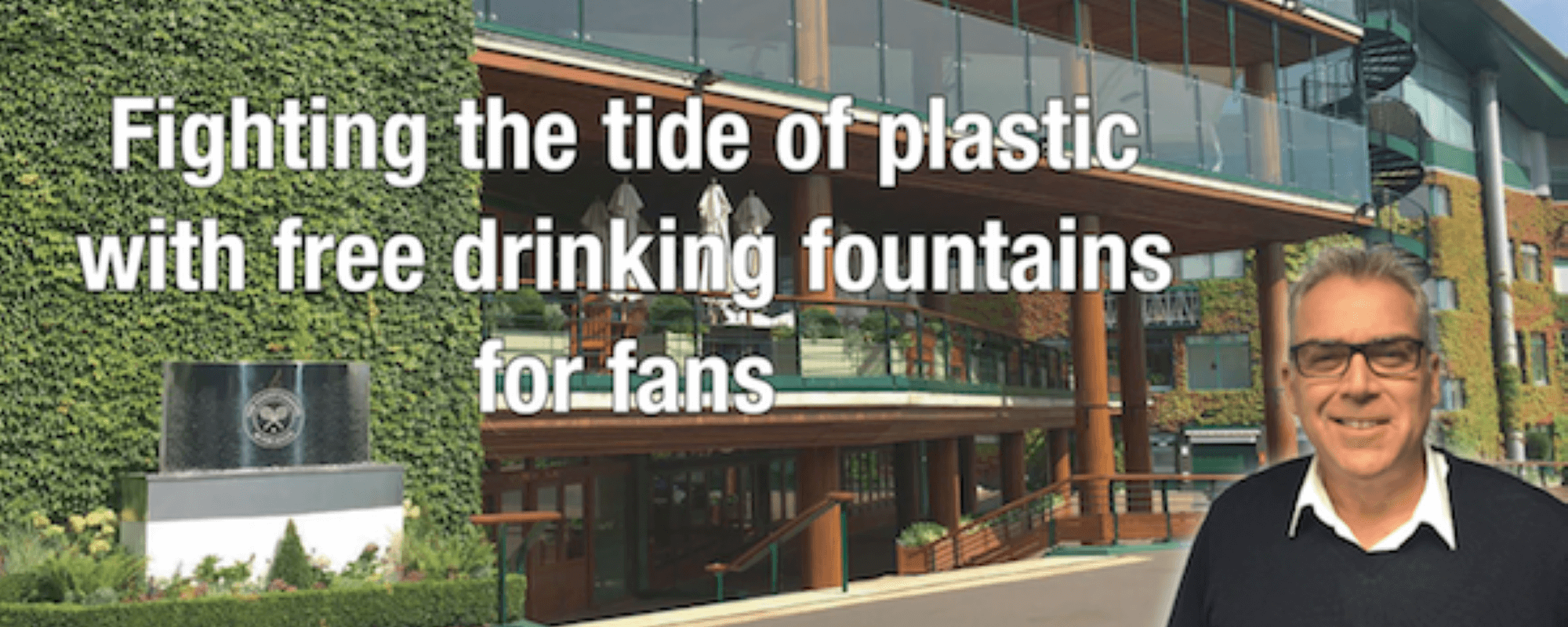 14th Jun 2018 by MIW Water Coolers
14th Jun 2018 by MIW Water Coolers
Fighting The Tide Of Plastic For Free Drinking Fountains For Fans
Mike Winter, Managing Director of MIW Water Cooler Experts, discusses the problem of plastic waste and how stadia can help cut both litter and costs with contemporary drinking.
Barely a day goes by when we don’t see a story in the media about the plight of plastic on our society – its effect on wildlife, litter levels on beaches or dwindling recycling rates. Drinking bottled water has become an accepted part of everyday life but a movement to tackle the vast amount of waste produced by this habit is gaining momentum and is something that forward-thinking football clubs and stadia cannot ignore.
So why should we tackle this issue?
38.5 million plastic bottles are bought in the UK every day, but only just over half are recycled, while 16m are put into landfill, burnt or leak into the environment and oceans each day.
Plastic bottles can take up to 450 years to break down once they reach the sea. Many of the popular bottled water brands consumed in the UK are transported hundreds of miles from their source, contributing to the 350,000 tonnes of carbon dioxide released into the atmosphere every year by the bottled water industry in the UK.
What is being done about it?
Blue Planet II pushed the plastic pollution issue onto the front pages of national media and into public consciousness. Last year we saw a turning point in public venues taking a stand against plastic water bottle waste by turning to the contemporary free-to-use drinking fountain.
Sky’s high-profile Ocean Rescue campaign aims to reduce the amount of plastic ending up in the sea. In support of this campaign the Oval provided 20,000 refillable water bottles to fans who were then encouraged to use the 20 free water points installed throughout the venue, in a move to reduce the amount of single-use plastic consumed.
ZSL London Zoo and Borough Market have both installed water fountains and removed all single use plastic from sale and Wimbledon Tennis Club and Heathrow Airport have also installed water fountains for members of the public.
So why should stadia get involved?
The level of plastic waste created at football matches is significant – the government estimates that games can individually generate 750,000 plastic bottles and seven tonnes of waste. Whilst environmental concerns may not be at the top of the list of stadium managers’ priorities, the reduction in clear up time and waste disposal costs following a match as a result of installing water fountains could be very favourable. Not to mention the merchandise opportunities for refillable bottles.
In April 2018, an exciting collaboration was announced between the English Premier League and Sky Ocean Rescue to take on the fight against single use plastics in football stadia. One club taking a lead is Tottenham Hotspur. They have said their new stadium will be free from plastic straws, stirrers, cutlery and its retail outlets will phase out standard 5p carrier bags. However, so far, they haven’t said what their plans are with regard to plastic bottles.
Stadia that tackle this head on can expect to enhance their reputation as forward-thinkers and responsible organisations if the positive response to the moves by the Oval and Borough Market are anything to go by.
The modern drinking fountain
There was a time when free-to-use drinking fountains were found in every place of public gathering in the UK. The motivation then was the prevention of cholera, but as overall sanitation improved public fountains fell out of favour. Now they’re making a comeback and we as a business are busier than ever.
The latest models of outdoor fountains are tougher, safer and more accessible than ever before. Hygienic and efficient, they can be plumbed into practically any indoor or outdoor space, delivering water without any of the waste, litter or expense associated with contained drinks. The growth in popularity however, is probably largely due to the improved design and build pioneered by today’s manufacturers.
Clever design means that once they’re installed – something which can usually be completed with minimal disruption if a sensible site is chosen – very little maintenance is required. Unlike their predecessors, a number of the current models of water fountain are also vandal proof, weather-proof and corrosion-resistant, so there is very little in the way of on-going costs.
While previously public drinking fountains were just one more burden for a site manager to worry about, now they just need an occasional wipe down as the cleaner makes their rounds, and with the removal of plastic bottles from the premises, other costly problems are resolved. And the evidence is that people love to use them.
Plastic waste is an issue that is not going to go away. We can only hope that we continue to see high profile organisations and venues making bold decisions to help tackle what is one off the most pressing issues of our time.











